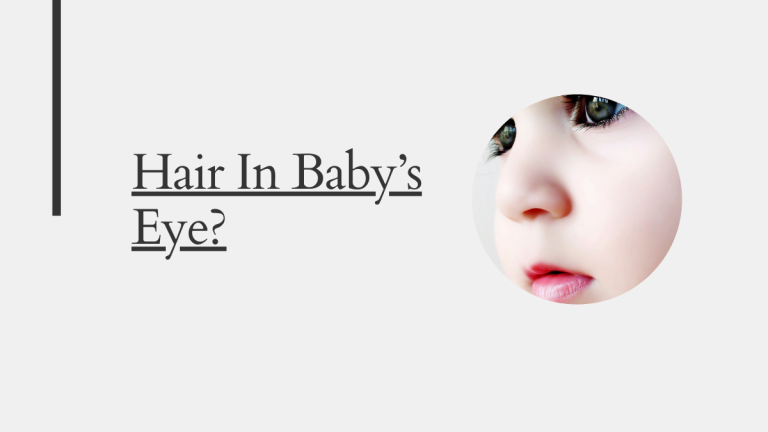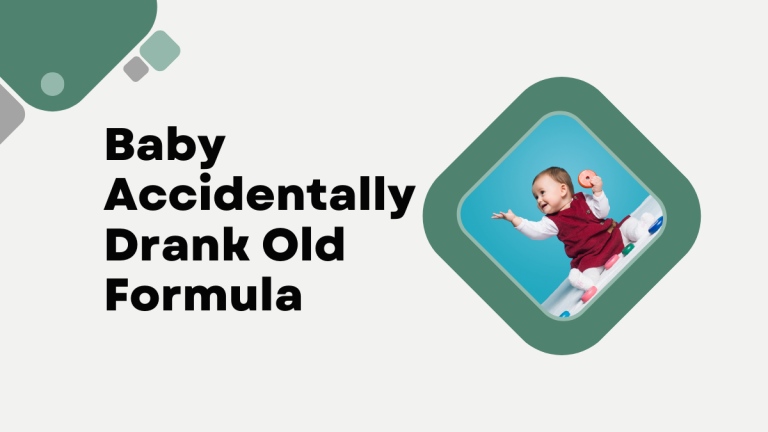Baby Accidentally Ate Play Doh (Or Child Eats Playdough)
“Oops! Did your little one just take a bite of colorful, squishy playdough? Don’t panic – it’s a common mishap that many parents have experienced. While it may leave you feeling slightly alarmed, rest assured that this playful incident can actually be quite harmless.
In today’s blog post, we’ll delve into the world of playdough consumption and uncover everything you need to know about what happens when baby accidentally eats play dough. So grab a seat and get ready for some unexpected insights on this curious toddler adventure!”
What is Play-Doh?
Play-Doh is a popular children’s modeling compound that has been entertaining kids for decades. It was first created in the 1950s by Joseph McVicker, who discovered it as a wallpaper cleaner and realized its potential as a toy. Since then, Play-Doh has become an iconic part of childhood playtime and can be found in households and classrooms all around the world.
The original Play-Doh formula was made up of flour, water, salt, boric acid, and mineral oil. However, over the years, the ingredients have changed to make it safer for children to use. Today’s Play-Doh is non-toxic and made primarily from wheat flour, water, salt, and food-grade colors. It also contains small amounts of preservatives to prevent mold growth.
One of the reasons why Play-Doh has remained so popular over the years is because of its versatility. Children can mold it into any shape they desire using their hands or various tools like cookie cutters and rolling pins. Its soft texture makes it easy for tiny fingers to manipulate without causing frustration or fatigue.
Another benefit of playing with Play-Doh is that it encourages creativity and imagination in young minds. Children are free to express themselves through their creations, whether it’s a simple snake or an elaborate castle. This kind of open-ended play helps develop fine motor skills, hand-eye coordination, and problem-solving abilities.
Why do babies and children eat non-food items?
As parents, we know that babies and children are naturally curious creatures. They love to explore their surroundings and put things in their mouths to learn about the world around them. However, this natural curiosity can sometimes lead them to eat non-food items, such as Play Doh.
So why exactly do babies and children eat non-food items? Here are a few potential reasons:
- Pica:
Pica is a condition where individuals have an appetite for non-nutritive items such as dirt, chalk, or even paint chips. This condition is more commonly found in young children and pregnant women due to nutritional deficiencies or underlying medical conditions. In some cases, pica may also be linked to developmental disorders such as autism spectrum disorder (ASD) or attention deficit hyperactivity disorder (ADHD). - Sensory exploration:
For babies and young children, putting objects in their mouths is a way of exploring different textures and tastes. It helps them understand their environment better and satisfy their natural curiosity. - Imitating peers:
Children often imitate the behavior of those around them, including older siblings or friends who may be playing with Play-Doh in front of them. - Teething:
Teething can be a difficult time for both babies and parents alike. The discomfort caused by teething can make babies seek relief by biting on anything they can find – including non-food items like Play-Doh.
Risks of eating Play-Doh
Play-Doh is a popular children’s toy that has been around for decades. It’s non-toxic and made with simple ingredients like flour, water, and salt, making it safe for kids to play with. However, when it comes to eating Play-Doh, there are some potential risks that parents should be aware of.
- Choking Hazard: One of the biggest risks of eating Play-Doh is the possibility of choking. Play-Doh is meant to be squeezed and moulded into different shapes, but if a child puts a large chunk in their mouth or tries to eat a whole piece, it can easily get stuck in their throat. This can be especially dangerous for younger children who may not have developed their swallowing reflexes yet.
- Digestive Issues: Although Play-Doh is technically non-toxic and made with food-grade ingredients, it’s not intended for consumption. Eating even small amounts of Play-Doh can lead to digestive issues such as stomach pain, nausea, vomiting, and diarrhoea. This is because the high levels of salt in Play-Doh can disrupt the balance of electrolytes in the body.
- Allergic Reactions: Some children may have sensitivities or allergies to certain ingredients used in making Play-Doh, such as wheat or food dyes. If your child has a known allergy to any of these ingredients, ingesting even a small amount could trigger an allergic reaction.
Signs that your baby or child may have eaten Play-Doh
Play-Doh is a popular modeling compound that has been a staple in children’s playtime for decades. It’s colorful, versatile, and most importantly, non-toxic. However, as with any toy or art material, there is always the risk of accidental ingestion.
If you suspect that your baby or child has eaten Play-Doh, it’s essential to take action immediately. While Play-Doh is generally safe, there are certain signs that you should look out for to ensure your child’s well-being.
- Visible Signs in Mouth
One of the most obvious signs that your baby or child may have eaten Play-Doh is if you see remnants of the product in their mouth. You may notice bits of colored dough stuck on their lips or teeth. In some cases, they may even have pieces of Play-Doh stuck in their throat.
- Difficulty Swallowing
If your child has ingested a significant amount of Play-Doh, they may experience difficulty swallowing due to the clumping nature of the compound when wet. This can cause discomfort and distress for your child and should be addressed immediately.
- Nausea and Vomiting
Eating large quantities of Play-Doh can also lead to nausea and vomiting as it may not sit well with your child’s stomach. If you notice these symptoms after your child has played with Play-Doh, it could be a sign that they have ingested some while playing.
What to do if your baby or child has eaten Play-Doh?
If your baby or child has accidentally eaten Play-Doh, it can be a scary and concerning situation. However, there are steps you can take to ensure their safety and well-being.
- Stay calm and assess the situation: The first thing to do is to stay calm and assess the situation. Take note of how much Play-Doh your child has ingested and if they are showing any immediate symptoms such as choking, difficulty breathing, or vomiting.
- Do not panic: It’s important not to panic as Play-Doh is non-toxic and generally safe for children to play with. Most likely, your child will be fine but it’s always better to err on the side of caution.
- Encourage them to drink water: If your child has swallowed a small amount of Play-Doh, encourage them to drink some water. This will help dilute the material in their stomach and make it easier for them to pass through their system.
- Monitor for any symptoms: Keep an eye on your child for any symptoms that may arise after ingesting Play-Doh. These may include stomach pain, nausea, vomiting or diarrhoea.
- Seek medical attention if necessary: If your child shows any severe symptoms such as choking or difficulty breathing, seek medical attention immediately by calling 911 or taking them to the emergency room.
Prevention tips for future incidents
Accidents are bound to happen, especially when you have a curious and adventurous child at home. While we cannot always prevent them from happening, there are certain steps we can take to help minimize the risk of future incidents.
Here are some prevention tips that every parent should keep in mind to ensure their child’s safety:
- Store Play-Doh properly: This may seem obvious, but it is important to store Play-Doh out of the reach of children when not in use. Make sure to close the containers tightly and keep them in a high or locked cabinet. It is also a good idea to place any small toys or objects that could potentially be mistaken for food away from the Play-Doh.
- Teach your child about toy safety: As soon as your child is old enough to understand, start talking to them about toy safety and what they can and cannot put in their mouths. Explain that Play-Doh is not edible and should only be used for playing.
- Supervise playtime: No matter how many precautions we take, accidents can still happen when children are left unsupervised. Whenever your child is playing with Play-Doh or any other small toys, make sure you keep an eye on them at all times.
Alternative play options for young children
When it comes to playtime, young children are always eager to explore and try out new things. However, as parents or caregivers, we also need to be mindful of the materials and toys we provide for our little ones.
Playdough is a popular choice for creative play, but what happens when your baby accidentally eats it? Don’t worry; there are alternative play options that are safe and fun for young children.
- Edible Playdough
One of the easiest solutions is to make your edible playdough at home using simple ingredients found in your kitchen. Some easy recipes include mixing flour, salt, water, and food colouring or using peanut butter and powdered sugar. Not only is this a safer option for young children who tend to put everything in their mouths, but it also allows them to unleash their creativity without any worries. - Sensory Bins
Sensory bins are a great way to engage young children in open-ended play while also stimulating their senses. You can fill a large container with different materials such as rice, beans, pasta, pom poms, or sand and add various objects like small toys or scoops for them to explore and manipulate. This type of play promotes fine motor skills development while keeping them entertained for hours.






